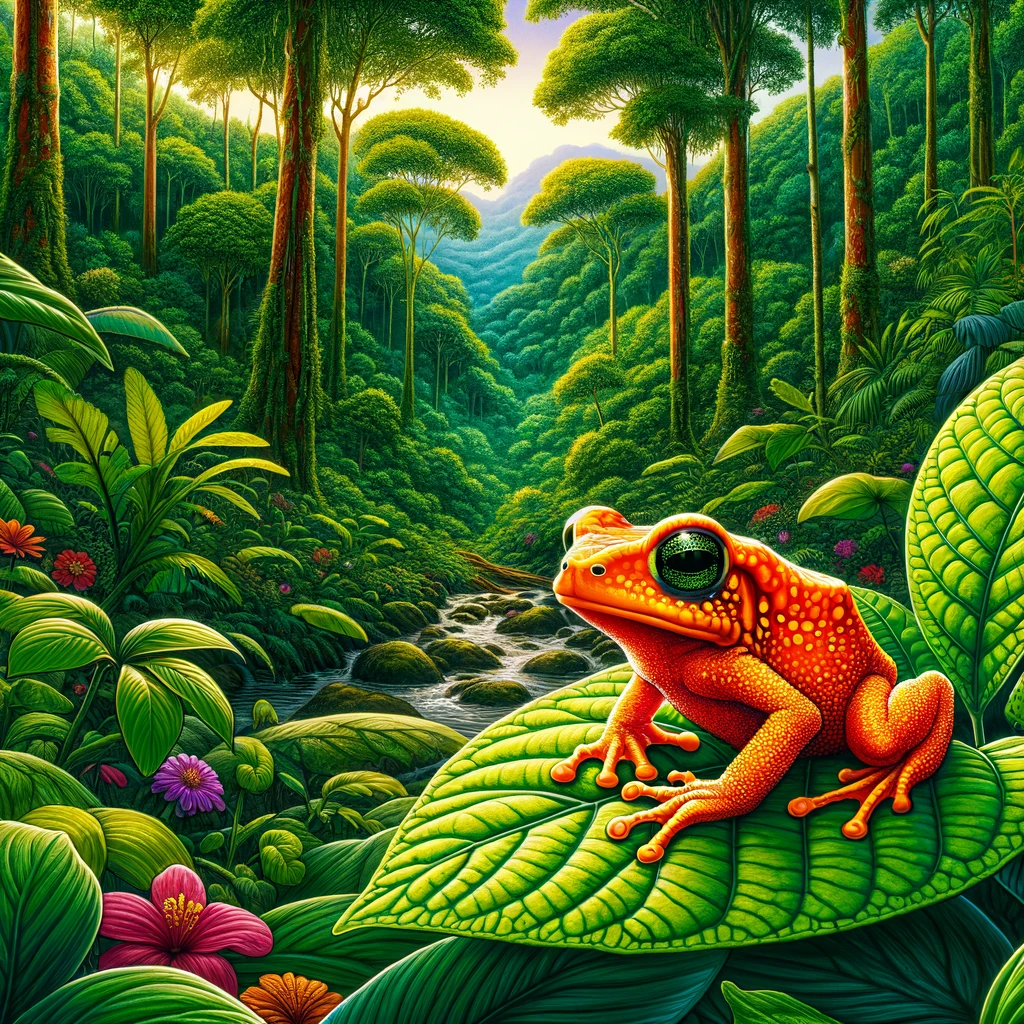Nestled in the lush, verdant expanses of Brazil’s Atlantic Forest lies one of nature’s most intriguing marvels—the pumpkin toadlet. These minuscule amphibians, with their vivid orange hues that mirror the autumnal shades of pumpkins, are more than just a splash of color in the biodiversity-rich tapestry of the rainforest. They encapsulate a fascinating blend of evolutionary intrigue, ecological significance, and conservation challenges.
A Glimpse into Their World
Pumpkin toadlets belong to the family Brachycephalidae and are primarily found in the southeastern parts of Brazil. Their striking orange coloration is not just for show; it serves as a stark warning to predators about their toxic nature. Despite their diminutive size, often not exceeding an inch in length, these amphibians carry potent toxins in their skin, a common trait among many brightly colored creatures in the wild.
Life Cycle and Behavior
The life cycle of the pumpkin toadlet is as captivating as its appearance. Unlike many amphibians that undergo a water-bound tadpole stage, pumpkin toadlets have a direct development cycle. They lay their eggs in moist leaf litter on the forest floor, where the embryos develop fully into tiny frogs, skipping the aquatic tadpole phase entirely. This adaptation is particularly suited to their terrestrial habitats in the Atlantic forest, where standing water may not always be available.
Communication among pumpkin toadlets is an area of active research and curiosity. Despite their ability to produce high-pitched calls, recent studies have revealed that some species are actually deaf to the frequencies of these sounds. This paradox has led scientists to explore alternative communication strategies that these frogs might employ, such as visual signals or perhaps even seismic vibrations to convey messages to potential mates or rivals.
Conservation Concerns
The enchanting world of pumpkin toadlets is not without its threats. Habitat destruction and fragmentation pose significant risks to their survival. The Atlantic Forest, once a vast biome, has been reduced to fragments of its former self due to deforestation, agriculture, and urbanization. Conservation efforts are crucial to preserve the remaining habitats of these unique amphibians and ensure their future.
The Path Forward
Research into the lives of pumpkin toadlets offers valuable insights into evolution, adaptation, and the ecological dynamics of tropical forests. By understanding more about their behavior, genetics, and habitat requirements, conservationists can better devise strategies to protect them. Public awareness and engagement are also key components in the fight to save these and other lesser-known species from extinction.

In conclusion, the pumpkin toadlet serves as a vibrant reminder of the wonders that lie hidden in the world’s forests. These tiny treasures of Brazil’s Atlantic Forest are a testament to the intricate web of life and the importance of conservation efforts to protect our planet’s irreplaceable biodiversity. As we delve deeper into their secrets, we uncover not just the mysteries of evolution and adaptation, but also the urgent need to safeguard the natural world for future generations.
